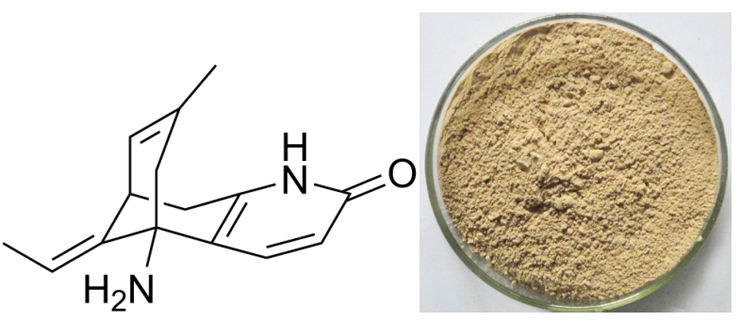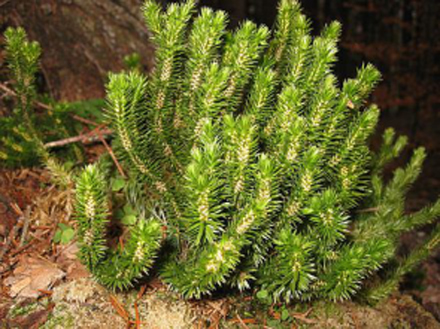Leading Manufacturer for Huperzine A Factory for Russia
Leading Manufacturer for Huperzine A Factory for Russia Detail:
[Latin Name]Huperzia serratum
[Source] Huperziceae whole herb from China
[Appearance]Brown to white
[Ingredient]Huperzine A
[Specification]Huperzine A 1% – 5%, HPLC
[Solubility] Soluble in chloroform, methanol, ethanol, slightly soluble in water
[Particle size] 80 Mesh
[Loss on drying] ≤5.0%
[Heavy Metal] ≤10PPM
[Pesticide residue] EC396-2005, USP 34, EP 8.0, FDA
[Storage] Store in cool & dry area, keep away from the direct light and heat.
[Shelf life] 24 Months
[Package] Packed in paper-drums and two plastic-bags inside.
[What is Huperzine A]
Huperzia is a type of moss that grows in China. It is related to club mosses (the Lycopodiaceae family) and is known to some botanists as Lycopodium serratum . The whole prepared moss was used traditionally. Modern herbal preparations use only the isolated alkaloid known as huperzine A. Huperzine A is an alkaloid found in huperzia that has been reported to prevent the breakdown of acetylcholine, an important substance needed by the nervous system to transmit information from cell to cell. Animal research has suggested that huperzine A’s ability to preserve acetylcholine may be greater than that of some prescription drugs. Loss of acetylcholine function is a primary feature of several disorders of brain function, including Alzheimer’s disease . Huperzine A may also have a protective effect on brain tissue, further increasing its theoretical potential for helping reduce symptoms of some brain disorders.
[Function] Used in alternative medicine, huperzine A has been found to act as a cholinesterase inhibitor, a type of medicine used to prevent the breakdown of acetylcholine (a chemical essential to learning and memory).
Not only used as a treatment for Alzheimer’s disease, huperzine A is also said to enhance learning and memory and to protect against age-related cognitive decline.
In addition, huperzine A is sometimes used to boost energy, increase alertness, and aid in the treatment of myasthenia gravis (an autoimmune disorder that affects the muscles).
Product detail pictures:

Related Product Guide:
We believe in: Innovation is our soul and spirit. High-quality is our life. Purchaser need is our God for Leading Manufacturer for Huperzine A Factory for Russia , The product will supply to all over the world, such as: Costa Rica, belarus, Lyon, Providing Quality Items, Excellent Service, Competitive Prices and Prompt Delivery. Our products and solutions are selling well both in domestic and foreign markets. Our company is trying to be one important suppliers in China.
Get your free audiobook:
https://imov.space/e/B00847CZ3Q
Functional foods offer specific benefits that enhance life and promote longevity, and the active compounds responsible for these favorable effects can be analyzed through a range of techniques. Handbook of Analysis of Active Compounds in Functional Foods presents a full overview of the analytical tools available for the analysis of active ingredients in these products.nearly 100 experts from all over the world explore an array of methodologies for investigating and evaluating various substances, including:amino acids, peptides, and proteins, along with glutamine, taurine, glutathione, carnitine, and creatinewaterand fat-soluble vitamins and probioticsterpenes, including hydrocarbon carotenoids and oxycarotenoids (xanthophylls)phenolic compounds such as flavonoids, flavan-3-ols, proanthocyanidins, stilbenes, resveratrol, anthocynanins, isoflavones, tannins, ellagic acid, and chlorogenic acidsfibers and polysaccharides, including chitosan, insoluble dietary fiber, fructans, inulin, pectin, and cyclodextrinsphytoestrogens and hormones, with chapters on anise oil and melatonintetrapyrroles, minerals, and trace elementslipid compounds, with discussions of omega 3 and 6 fatty acids, conjugated linoleic acids, lecithin, sterols, stanols, lipoic acid, and alliinsweeteners, salt replacers, and taste-modifying compoundseach chapter describes the specific compound and its benefits, surveys the range of analytic techniques available, and provides ample references to facilitate further study. The book follows a convenient format with well-organized chapters, allowing readers to quickly hone in on specific topics of interest. This comprehensive reference provides a complete survey of the most cutting-edge analytical techniques available for researchers, industry professionals, and regulators.
Dr. Steven Lamm, author of the best-selling book “No Guts, No Glory”, says far too often, the only thing keep a patient from getting the relief they need are the uncomfortable feelings people get when they talk about their digestive system.
As a veteran of this industry, we can say that the company can be a leader in the industry, select them is right.






